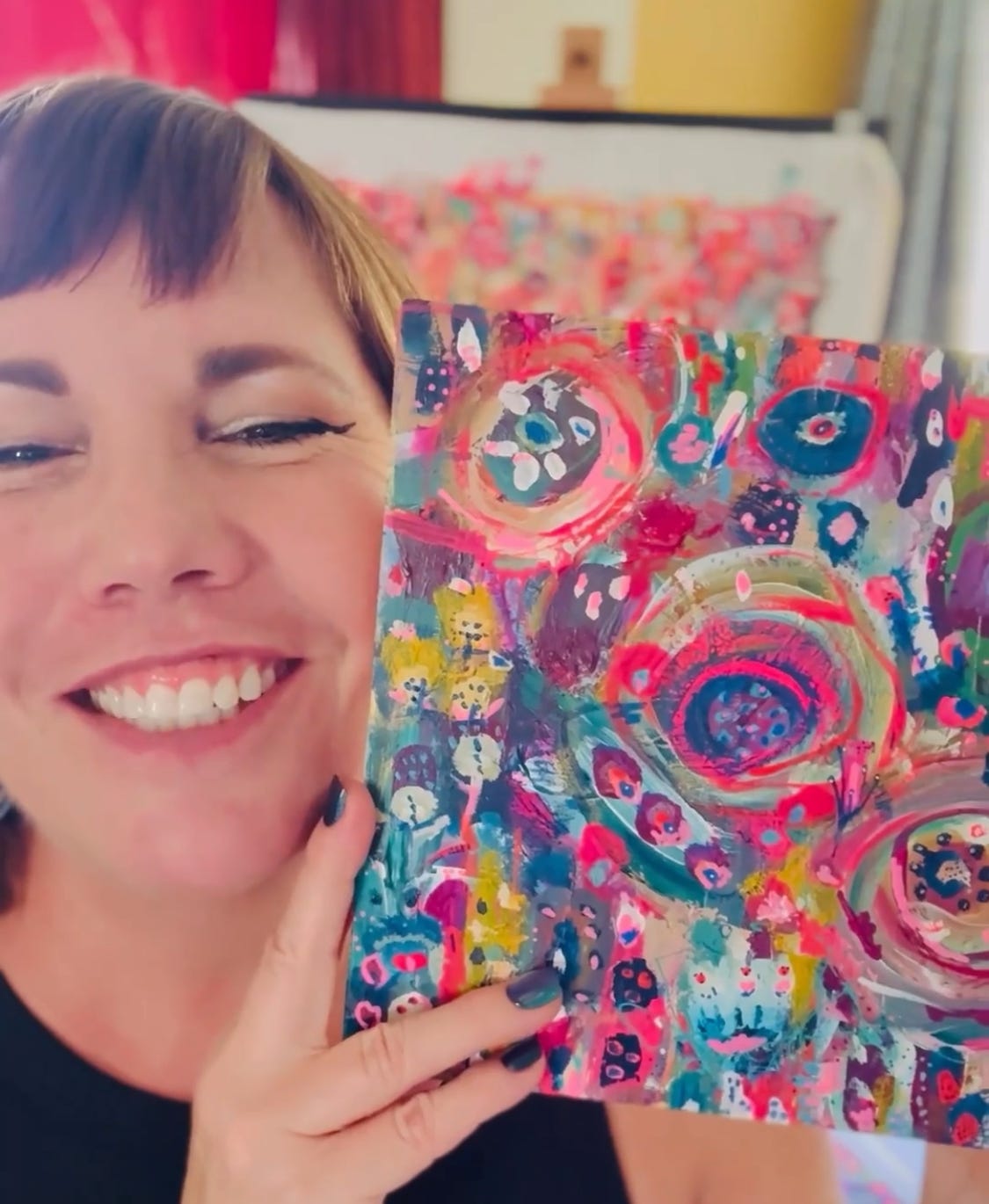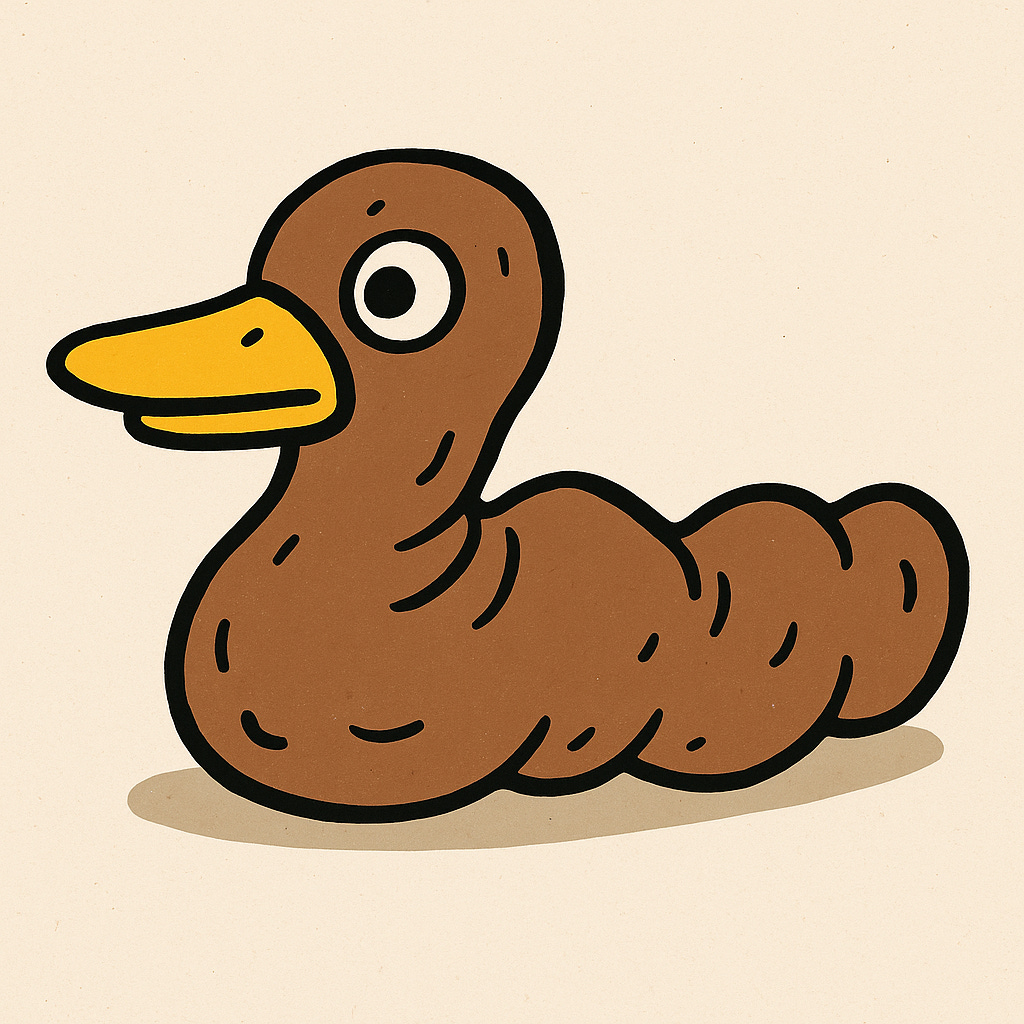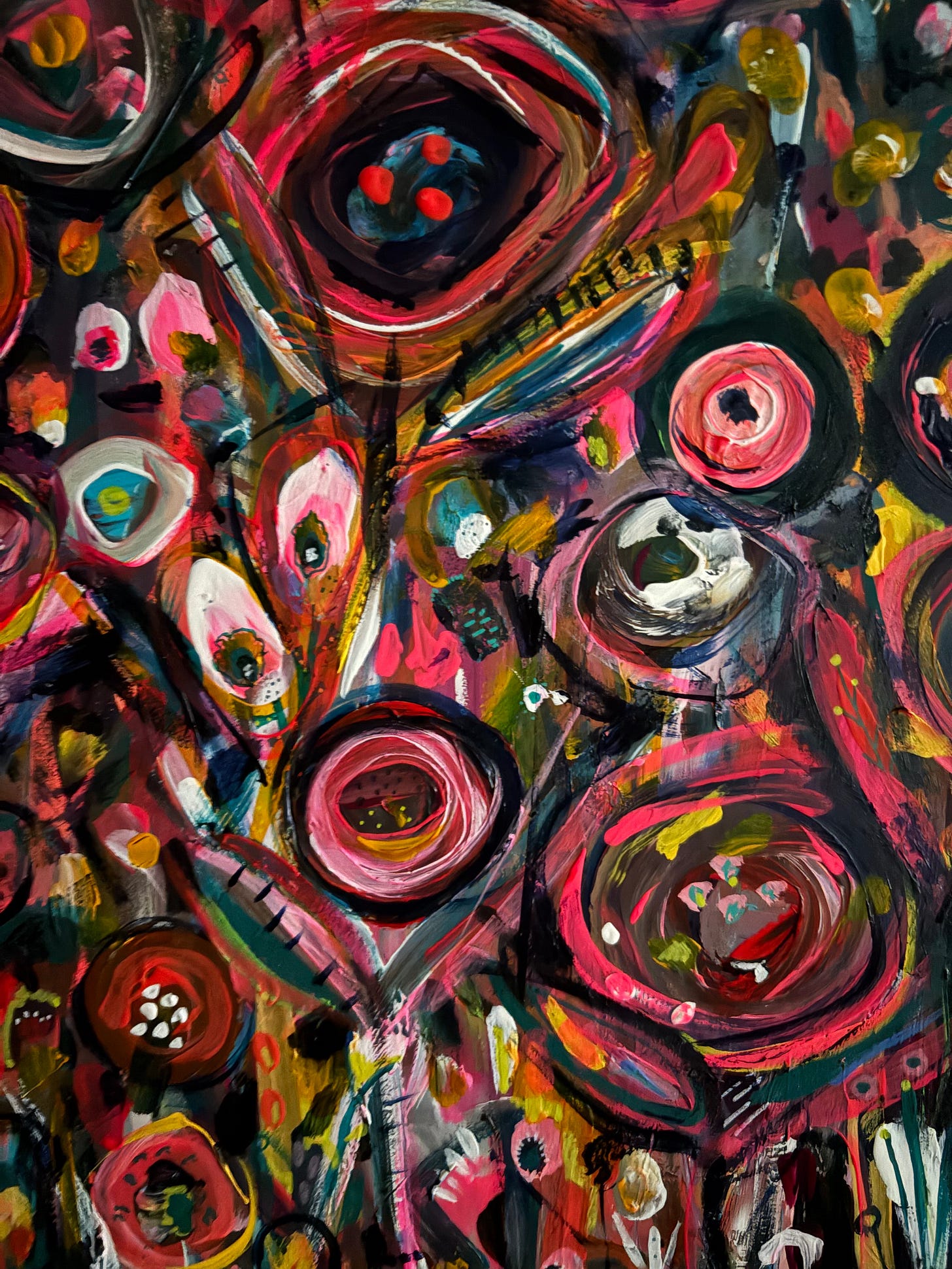The Language of Color, Chaos, and Calm
An artist’s story of rebellion, tenderness, and balance on canvas
About this essay:
In The Language of Color, Chaos, and Calm, I explore how memory, grief, rebellion, and the need for balance rise up in my art—how bright colors and deep shadows carry the weight of things words can’t always hold. This is a story about painting as both freedom and grounding, about the human spirit speaking in color when language falls short.
There are things we carry that no one can see. Layers of grief, rebellion, memory, and the stubborn spark of a self that never stops speaking, even when words fail. My art began as a way to move my hands, to make marks, to play with color. I didn’t know it was the language my inner world had been waiting for.
When I paint, I am not just arranging colors. I am negotiating with chaos and grounding.
The hot pinks, the wild fluorescents—they come like emotional surges, bright and insistent, demanding to be seen. They are passion, romance, and heat—the pulse of being alive. Chaotic, electrifying, sometimes rebellious, but also joyous, defiant, and sensual. They carry the vitality of a spirit that refuses to be quieted.
Then there are the deep blues, the inky blacks, the shadows of my work. People sometimes think darkness means danger, fear, or sorrow. For me, the dark is where I finally breathe. It is dusk after a too-bright day, the calm that says, you can stop now.
The painting moves between these extremes—light into dark, dark into light—layer after layer until it finally feels balanced. It becomes the moment when chaos and grounding finally meet in the middle.
My art is not a coincidence. It is not accidental. It is my life speaking through color.
Childhood Fragments
I think about the clay duck sometimes. The school assignment where I rolled the clay into a log, squeezed it between my fingers so it looked like a turd, stuck a bill on it, and handed it in: there’s your duck. My mom laughed because she knew instantly which one was mine. Even then, I was giving them what they asked for—but in my own way.
That same child stared at the blue belt hanging in the kitchen—the threat behind every rule—as she climbed onto her stool and poured her soggy Kellogg’s Cornflakes down the sink while her mother showered. The same meal, served every single day. Breakfast wasn’t just breakfast. It was a command, and the rebellion was small but certain.
I feel these memories when I paint. Not consciously, but intuitively. Experiences and emotions rise up in the colors, in the shapes, in the wildness that will not be tamed.
Grief, Anger, and the Palette of Memory
When my mother died, I painted a piece so black and angry I couldn’t bear to look at it. It was heavy with what I couldn’t say. Ugly with grief. Seeing my emotions in that form was unbearable. I threw it out. It was discarded.
Art like that isn’t for keeping. It’s for surviving.
The Dusk Between Chaos and Calm
People talk about trauma like it’s a single story. It isn’t. It’s layers. It’s nurture and nature, memory and body, rebellion and longing, expression and structure. My art lives in that space between chaos and calm, between the fluorescent burst and the grounding dark, between the self that needs freedom and the self that needs scaffolding to stand.
This is why I paint circles, blooms, shapes that feel botanical. I have always been drawn to nature—the growth, the seasons, the way light gives way to dusk and dusk to darkness. I love that time of day when the light softens and the world exhales. It feels the way my paintings feel when they finally come together: chaos held by calm, wildness held by something steady and quiet.
Making Meaning Out of the Weight
I didn’t set out to make trauma art. I set out to live. To breathe. To stop carrying so much. But the weight comes through anyway—in the color, in the movement, in the push and pull of my compositions.
And maybe this is what I hope for most: that my work gives others what it gives me. A way to speak without words. A way to rebel safely. A way to hold both chaos and calm, passion and quiet, in the same breath.
People think abstract art is mysterious, hard to understand. But for me, it is the most honest language I have—a beautiful expression of spirit.
Closing Thought
I don’t know if I would have created this work without the trauma, without the ADHD, without the complicated love of a complicated mother. I will never know. What I do know is that the paintings keep coming, and each one feels like another piece of my story finding its way into the world.
And maybe that is enough.
Splinter & Bloom — a continuing story of art, memory, and meaning




